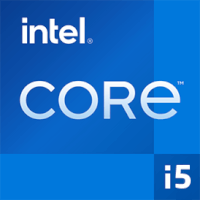| Intel Core i5-11600KF | Intel Core i5-11600F | |
| 125 W | Max TDP | 65 W |
| NA | Power consumption per day (kWh) | NA |
| NA | Running cost per day | NA |
| NA | Power consumption per year (kWh) | NA |
| NA | Running cost per year | NA |
Intel Core i5-11600KF vs Intel Core i5-11600F

The Intel Core i5-11600KF operates with 6 cores and 12 CPU threads. It run at 4.90 GHz base 4.60 GHz all cores while the TDP is set at 125 W.The processor is attached to the LGA 1200 CPU socket. This version includes 12.00 MB of L3 cache on one chip, supports 2 memory channels to support DDR4-3200 RAM and features 4.0 PCIe Gen 20 lanes. Tjunction keeps below 100 °C degrees C. In particular, Rocket Lake S Architecture is enhanced with 14 nm technology and supports VT-x, VT-x EPT, VT-d. The product was launched on Q1/2021

The Intel Core i5-11600F operates with 6 cores and 12 CPU threads. It run at 4.80 GHz base 4.00 GHz all cores while the TDP is set at 65 W.The processor is attached to the LGA 1200 CPU socket. This version includes 12.00 MB of L3 cache on one chip, supports 2 memory channels to support DDR4-3200 RAM and features 4.0 PCIe Gen 20 lanes. Tjunction keeps below 100 °C degrees C. In particular, Rocket Lake Architecture is enhanced with 14 nm technology and supports VT-x, VT-x EPT, VT-d. The product was launched on Q1/2021
Intel Core i5-11600KF
Intel Core i5-11600F
Compare Detail
| 3.90 GHz | Frequency | 2.80 GHz |
| 6 | Cores | 6 |
| 4.90 GHz | Turbo (1 Core) | 4.80 GHz |
| 4.60 GHz | Turbo (All Cores) | 4.00 GHz |
| Hyperthreading | Yes |
|
| Overclocking | No |
|
| normal | Core Architecture | normal |
| no iGPU | GPU | |
| No turbo | GPU (Turbo) | No turbo |
| 14 nm | Technology | 14 nm |
| No turbo | GPU (Turbo) | No turbo |
| DirectX Version | ||
| Max. displays | ||
| DDR4-3200 | Memory | DDR4-3200 |
| 2 | Memory channels | 2 |
| Max memory | ||
| ECC | No |
|
| 3.00 MB | L2 Cache | 3.00 MB |
| 12.00 MB | L3 Cache | 12.00 MB |
| 4.0 | PCIe version | 4.0 |
| 20 | PCIe lanes | 20 |
| 14 nm | Technology | 14 nm |
| LGA 1200 | Socket | LGA 1200 |
| 125 W | TDP | 65 W |
| VT-x, VT-x EPT, VT-d | Virtualization | VT-x, VT-x EPT, VT-d |
| Q1/2021 | Release date | Q1/2021 |
Cinebench R23 (Single-Core)
Cinebench R23 is the successor of Cinebench R20 and is also based on the Cinema 4 Suite. Cinema 4 is a worldwide used software to create 3D forms. The single-core test only uses one CPU core, the amount of cores or hyperthreading ability doesn't count.
Cinebench R23 (Multi-Core)
Cinebench R23 is the successor of Cinebench R20 and is also based on the Cinema 4 Suite. Cinema 4 is a worldwide used software to create 3D forms. The multi-core test involves all CPU cores and taks a big advantage of hyperthreading.
Cinebench R20 (Single-Core)
Cinebench R20 is the successor of Cinebench R15 and is also based on the Cinema 4 Suite. Cinema 4 is a worldwide used software to create 3D forms. The single-core test only uses one CPU core, the amount of cores or hyperthreading ability doesn't count.
Cinebench R20 (Multi-Core)
Cinebench R20 is the successor of Cinebench R15 and is also based on the Cinema 4 Suite. Cinema 4 is a worldwide used software to create 3D forms. The multi-core test involves all CPU cores and taks a big advantage of hyperthreading.
Cinebench R15 (Single-Core)
Cinebench R15 is the successor of Cinebench 11.5 and is also based on the Cinema 4 Suite. Cinema 4 is a worldwide used software to create 3D forms. The single-core test only uses one CPU core, the amount of cores or hyperthreading ability doesn't count.
Cinebench R15 (Multi-Core)
Cinebench R15 is the successor of Cinebench 11.5 and is also based on the Cinema 4 Suite. Cinema 4 is a worldwide used software to create 3D forms. The multi-core test involves all CPU cores and taks a big advantage of hyperthreading.
Geekbench 5, 64bit (Single-Core)
Geekbench 5 is a cross plattform benchmark that heavily uses the systems memory. A fast memory will push the result a lot. The single-core test only uses one CPU core, the amount of cores or hyperthreading ability doesn't count.
Geekbench 5, 64bit (Multi-Core)
Geekbench 5 is a cross plattform benchmark that heavily uses the systems memory. A fast memory will push the result a lot. The multi-core test involves all CPU cores and taks a big advantage of hyperthreading.
Monero Hashrate kH/s
The crypto currency Monero has been using the RandomX algorithm since November 2019. This PoW (proof of work) algorithm can only efficiently be calculated using a processor (CPU) or a graphics card (GPU). The CryptoNight algorithm was used for Monero until November 2019, but it could be calculated using ASICs. RandomX benefits from a high number of CPU cores, cache and a fast connection of the memory via as many memory channels as possible

Electric Usage Estimate


